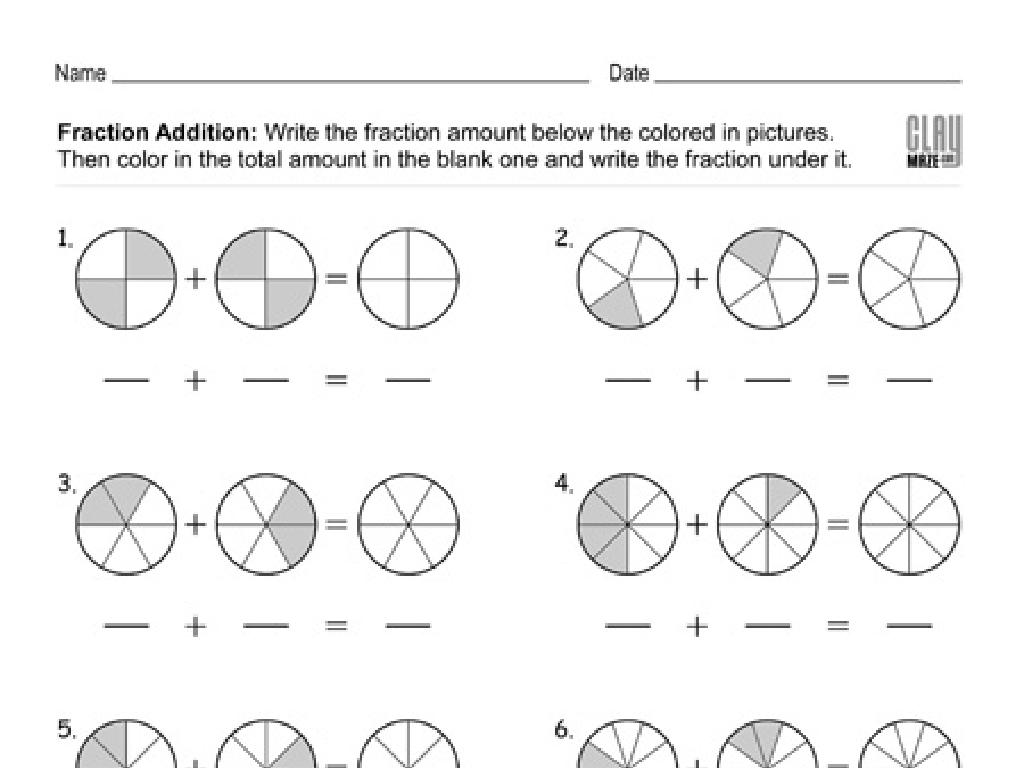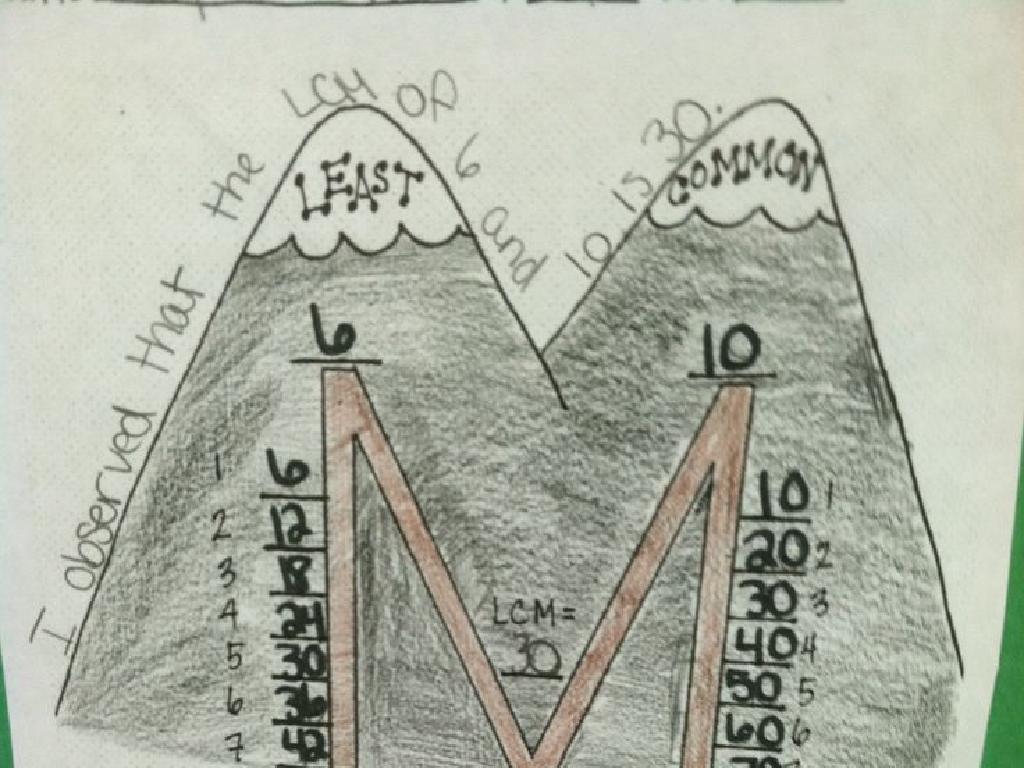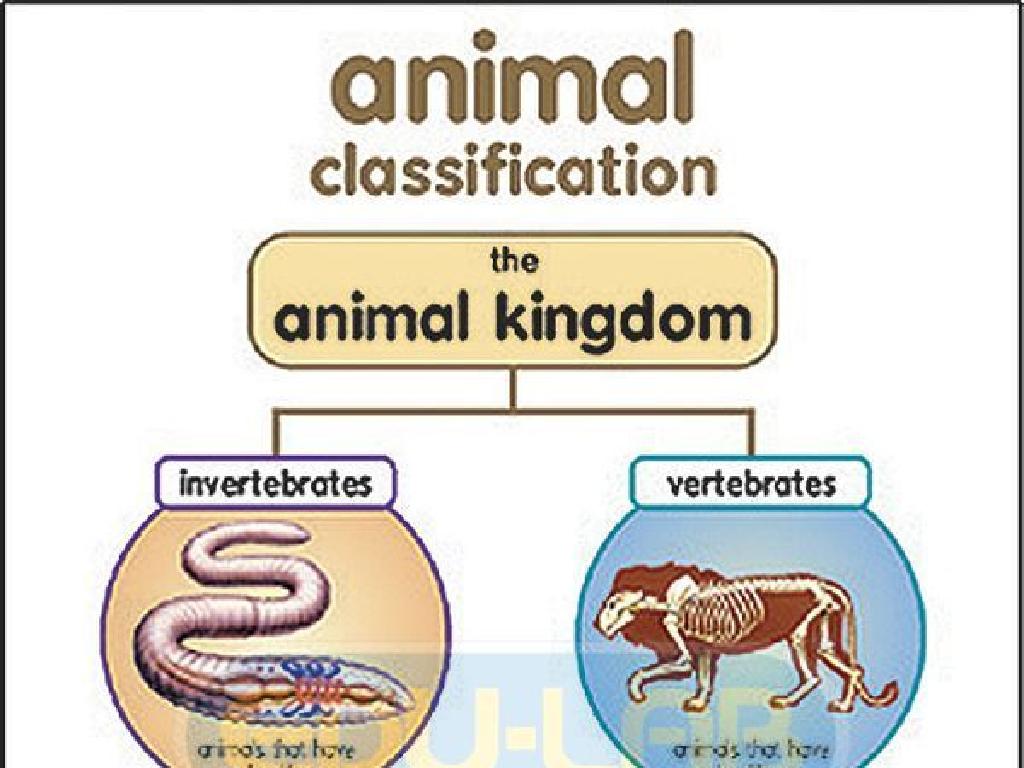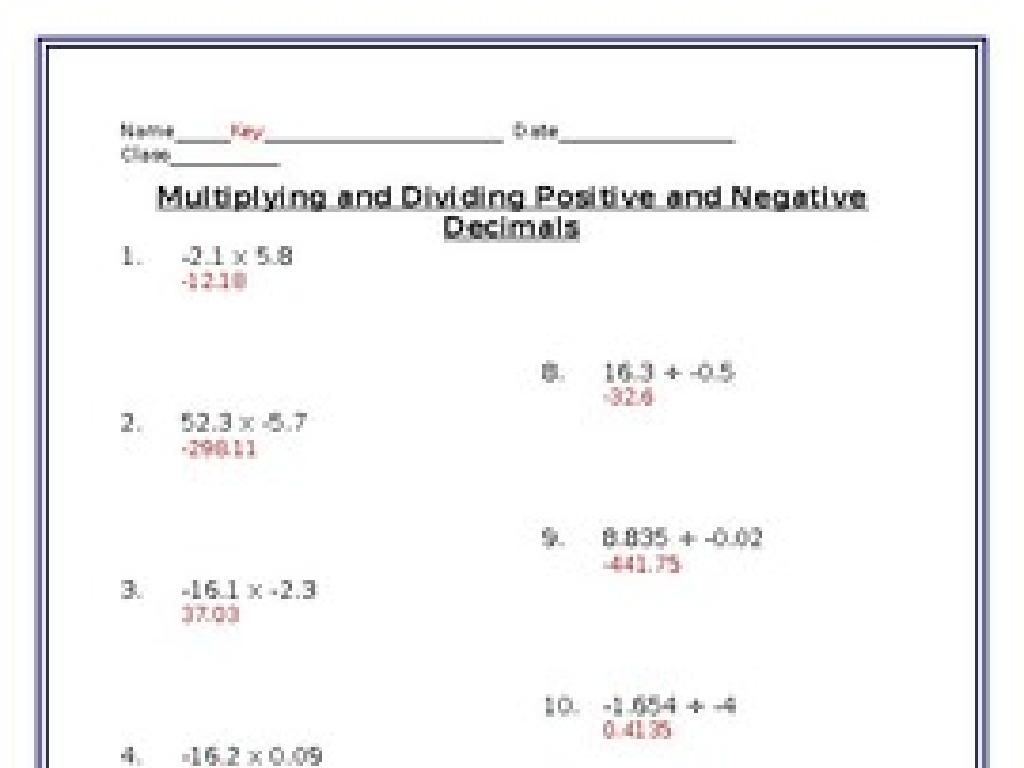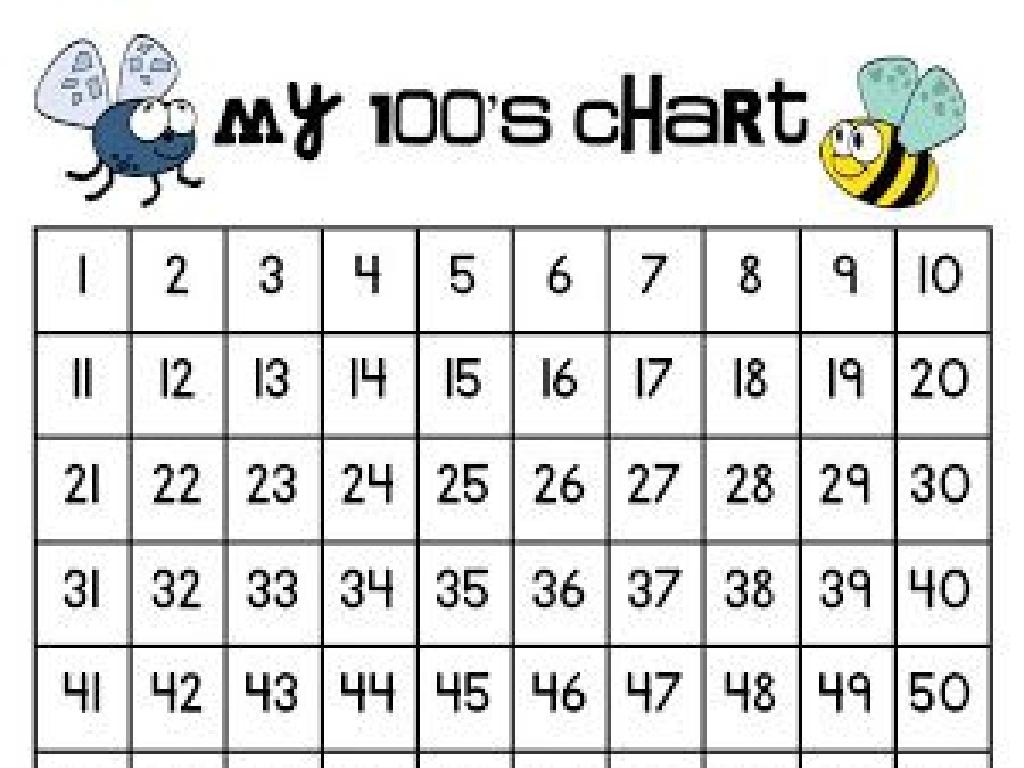Compare Area And Perimeter Of Two Figures
Subject: Math
Grade: Fourth grade
Topic: Area
Please LOG IN to download the presentation. Access is available to registered users only.
View More Content
Area vs. Perimeter: Exploring Shapes
– What is Area?
– Area measures the space inside a shape.
– What is Perimeter?
– Perimeter is the total length around a shape.
– Comparing Areas
– Use unit squares to see which shape has more space inside.
– Comparing Perimeters
– Measure the sides and add to find which has the longer outline.
|
This slide introduces the concepts of area and perimeter, which are fundamental in understanding the properties of shapes. Area is the measure of space within the boundaries of a two-dimensional shape, usually measured in square units. Perimeter is the total distance around the edges of a shape. When comparing areas, we look at the amount of space covered by two shapes, which can be visualized by counting unit squares. For perimeters, we measure the length of each side and add them together to find the total distance around the shape. Encourage students to think about different shapes that might have the same perimeter but different areas, or the same area but different perimeters. This will help them understand that area and perimeter are independent attributes of shapes.
Understanding Area
– Area: size of a surface
– Area is how much space is inside a shape.
– Measured in square units
– Units could be square inches (in²), square feet (ft²), etc.
– Imagine painting a shape
– Think about covering the whole inside with paint.
– How much paint needed?
|
This slide introduces the concept of area to fourth-grade students. Area is explained as the size of a surface, which can be understood by imagining how much paint would be needed to cover the inside of a shape completely. Emphasize that area is always measured in square units, which could be square inches for small surfaces or square feet for larger ones. Use visual aids or props, like a painted box, to help students visualize the concept. Encourage students to think about different shapes they encounter daily and consider the area each shape might have.
Understanding Perimeter
– Perimeter: distance around a shape
– Measured in units (e.g., inches, feet)
– Perimeter is like a fence length
– If you walk around a garden, the steps you take measure the perimeter.
– Compare with area
– Area is the space inside, while perimeter is the border length.
|
This slide introduces the concept of perimeter to the students. Perimeter is explained as the total distance around the edge of a two-dimensional shape. Use everyday examples like measuring the length of a fence needed to surround a yard to make the concept relatable. Emphasize that perimeter is measured in standard units of length. Highlight the difference between area and perimeter by explaining that while area measures the space inside a shape, perimeter measures the length around it. Encourage students to think of perimeter as a path that outlines the shape. In the next class, we can compare this with the concept of area, which they are already familiar with, and explore how different shapes with the same area can have different perimeters.
Area vs. Perimeter: Understanding the Difference
– Area and Perimeter are not the same
– Area measures inside space
– Like the space where you play inside a yard
– Perimeter measures edge length
– Like the fence around the yard
– Examples show how they differ
– A rectangle and square with same Perimeter can have different Areas
|
This slide is designed to help students differentiate between the concepts of area and perimeter. Area is the measure of the space inside a two-dimensional shape, while perimeter is the total length of the edges around the shape. Use real-life examples such as comparing the space inside a yard (area) to the length of the fence surrounding it (perimeter). Show how two shapes can have the same perimeter but different areas by using a square and a rectangle as examples. This will illustrate that even if the boundary length is the same, the space inside can vary. Encourage students to think of other examples where area and perimeter differ and to visualize the concepts by drawing shapes and calculating both area and perimeter.
Calculating Area of Rectangles
– Area formula: Length x Width
– Example: Rectangle dimensions
– A rectangle with Length=4 units, Width=3 units
– Calculating area: 4 units x 3 units
– Multiply length by width to find area
– Area result: 12 square units
– The area is 12 units squared, a measure of space inside
|
This slide introduces the concept of calculating the area of a rectangle, which is a fundamental aspect of understanding geometry. The area is the amount of space inside a two-dimensional shape. For a rectangle, the area is found by multiplying the length by the width. Use the example provided to show students a practical application of the formula. Have them visualize the rectangle and understand that each square unit represents a part of the space inside the rectangle. Encourage students to practice with different dimensions and to understand that area is always expressed in square units.
Calculating Perimeter
– Perimeter: Sum of all sides
– Example: Rectangle Perimeter
– Add the lengths of all sides together
– Length=4 units, Width=3 units
– For our rectangle, we have 2 lengths and 2 widths
– Total Perimeter = 14 units
– 4 units + 3 units + 4 units + 3 units = 14 units
|
This slide is focused on teaching students how to calculate the perimeter of a rectangle. Start by explaining that the perimeter is the total distance around the edge of a shape. Use the example of a rectangle with a length of 4 units and a width of 3 units to show how to add the lengths of all the sides to find the perimeter. Emphasize that for a rectangle, there are two equal lengths and two equal widths. The formula for the perimeter of a rectangle is 2 times the length plus 2 times the width, which simplifies to adding all four sides. Have students practice with different rectangles, and encourage them to check their work by verifying that opposite sides are equal and that they have added all sides correctly.
Comparing Area and Perimeter
– Same perimeter, different areas
– Rectangles with same perimeter but different length and width show varying areas.
– Same area, different perimeters
– Rectangles with same area can have different lengths and widths, leading to different perimeters.
– Examples of area vs. perimeter
– Compare a square (4×4) and a rectangle (2×8) – both have the same perimeter but different areas.
– Understanding through comparison
– Visual examples help grasp why figures can share one measurement but not the other.
|
This slide aims to clarify the concept that two shapes can have the same perimeter but different areas, and vice versa. Start by explaining that perimeter is the distance around a shape while area is the space inside it. Use visual aids to show, for example, two rectangles with the same perimeter but different dimensions, resulting in different areas. Similarly, demonstrate how two shapes can cover the same amount of space (area) but have different border lengths (perimeters). Encourage students to draw their own shapes to solidify their understanding. This will prepare them for activities where they will compare and contrast area and perimeter in various figures.
Example Time: Area vs. Perimeter
– Shapes with same area, different perimeter
– e.g., Rectangle and square with same space inside but different border lengths
– Shapes with same perimeter, different area
– e.g., Two rectangles with same border length but different space inside
– Understanding area and perimeter
– Your turn to find examples!
– Think of shapes in real life that might fit these criteria
|
This slide is designed to help students understand that two shapes can have the same area but different perimeters and vice versa. Start by explaining that the area is the space inside a shape, while the perimeter is the total distance around the shape. Show them examples like a rectangle and a square that have the same area but different perimeters. Then, show them two rectangles with the same perimeter but different areas. Encourage students to think critically by asking them to come up with their own examples. This activity will help solidify their understanding of the concepts of area and perimeter and how they can vary independently.
Shape Investigators: Area vs. Perimeter
– Become detectives of shapes
– Pairs draw & calculate on grid paper
– Use grid paper to draw shapes and find area (squares inside) & perimeter (sides around)
– Find shapes with equal area
– Look for different shapes that cover the same number of squares
– Share discoveries with the class
|
In this engaging class activity, students will work in pairs to explore the concepts of area and perimeter using grid paper. They will act as ‘shape detectives’ to find and draw shapes that, despite having the same area, have different perimeters. This hands-on approach helps students understand that area and perimeter are two different properties of shapes. Provide students with examples of how to calculate both area and perimeter. After the activity, facilitate a class discussion where students can present their findings and reflect on how shapes with the same area can have different perimeters. Possible shapes to compare could include rectangles with different side lengths but the same area, or a square and a rectangle with the same area. This activity will reinforce their understanding of area and perimeter in a practical and collaborative way.
Shape Investigators: Conclusion & Homework
– Excellent work, Shape Investigators!
– Recall: Area vs. Perimeter
– Area is inside space, Perimeter is edge length
– Homework: Explore shapes at home
– Find objects, draw their outlines
– Draw and calculate area & perimeter
– Use formulas to find area and perimeter
|
Well done to the students for their hard work in understanding the concepts of area and perimeter. As a reminder, area measures the space within a shape, while perimeter measures the total length around a shape. For homework, students are encouraged to look for everyday objects, draw their shapes, and apply the formulas they’ve learned to calculate both the area and perimeter. This will help reinforce their understanding through practical application. In the next class, we can discuss their findings and address any questions that may have arisen during their exploration.

